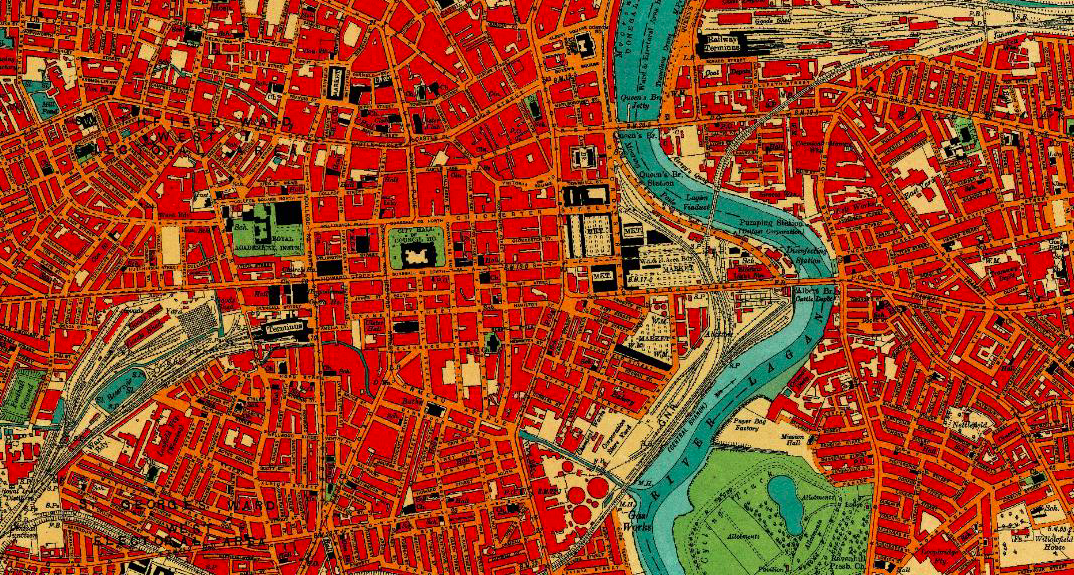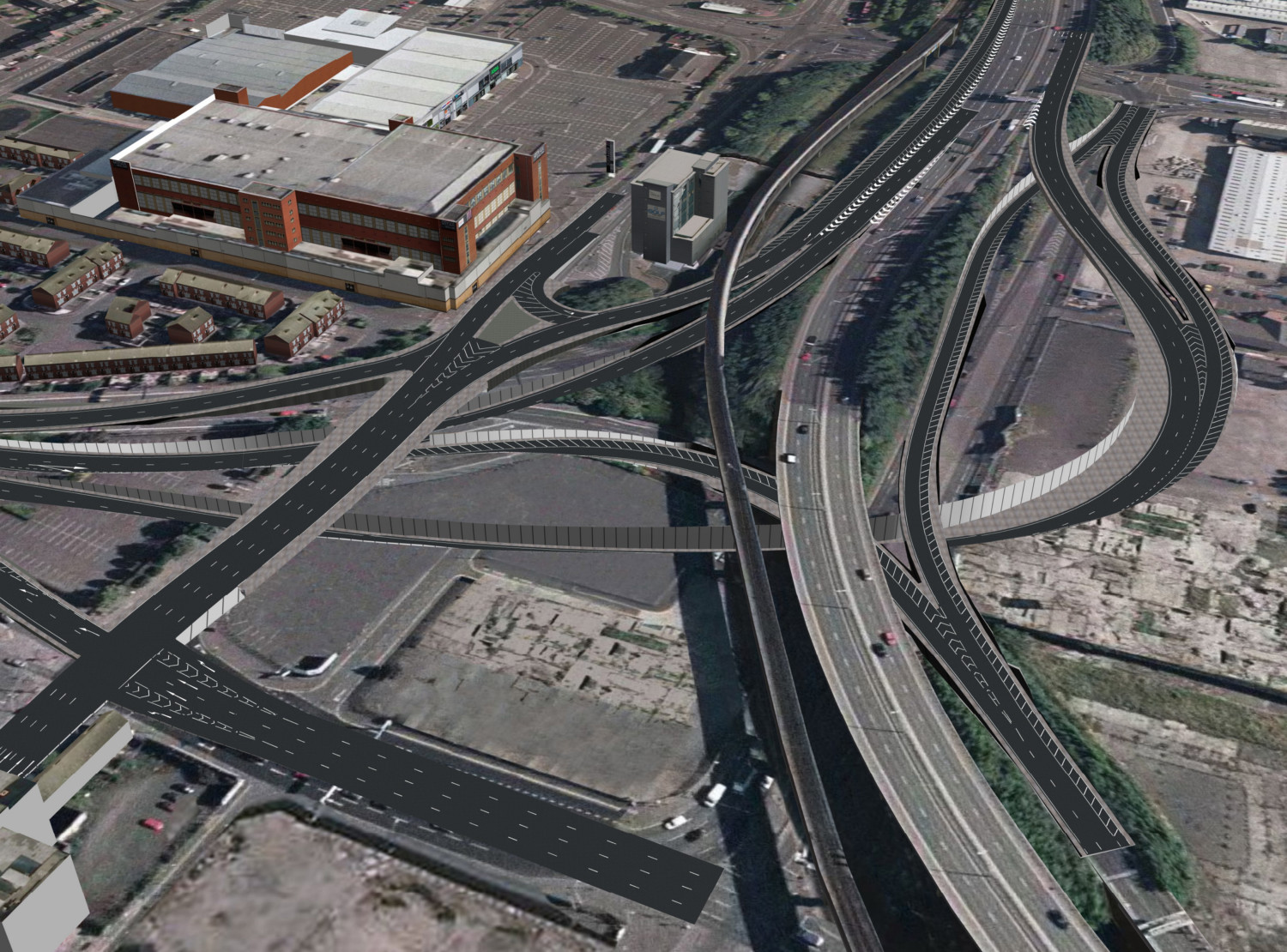Submitted by David Capener
Redeveloping Belfast for Future Decay?
Ireland Architecture News - Aug 18, 2017 - 22:38 11412 views

Belfast is a vibrant, creative city. Its diverse and varied history makes it one of the most unique cities in Europe. The compact city centre, nestled in-between the mountains and the sea has a diverse architectural heritage. In the years since the Good Friday peace agreement the city has seen significant changes, but the future success of the urban environment of Belfast city centre depends on how successfully the city navigates the next few years.
The city is entering a crucial phase — the fourth of three critical phases in its planning history. There have of course been many crucial phases in Belfast’s planning history; to reduce them four would risk reductionism. Nevertheless these phase have had an unusually significant impact on the city and warrant being mentioned.
The first phase was the introduction of the city centre grid layout. Now only visible in the long stretching vistas around the city hall, the 19th century grid knitted the city centre together linking it with the surrounding neighbourhoods. The second phase involved the dismantling of the grid in part due to a number of ill conceived infrastructure planning decisions cumulating in the construction of a road network (the Westlink, M2 and M3) that carved up the north and west of the city, cutting off historic neighbourhoods and rendering large areas of land, blighted by underpasses, undevelopable.

1800's Belfast Map. Image © Queens University Belfast
In addition to this, at the height of the ‘troubles’, the 1970’s saw areas of Belfast like the Markets neighbourhood redeveloped to contain the communities cutting them off from the city. "They started to disconnect the communities and build a wall around the area", says Deirdre Hargey a local councillor, showing me a historic plan from the 1800’s when the Markets, were built. The plan shows the layout of the Markets as a continuation of the nineteenth century, city centre grid system. A stark contrast with the wall of housing that bounds the site today. 'The wall' has its back turned to the city, punctuated by a series of narrow alleyways leading into cul-de-sacs of rear facing housing and a network of more narrow passages.
The third phase began around the time of the Good Friday peace agreement. With optimism came investment and with investment came a flurry of building projects. Dr Conor McCabe from University College Dublin calls this a 'double transition'. The move towards peace has been coupled with a move towards an aggressive economic neoliberalism. This pincer movement, changed the shape of the city, now cumulating in a phase of unprecedented redevelopment that will affect the city for generations to come.
In an attempt to address the failure of past transport planning decisions a massive infrastructure project, to the north of the city centre, known as The York Street Interchange (YSI) is about to begin. Funded by the £400m infrastructure budget agreed in the £1bn Tory-DUP post-election pact, a multi-lane flyover will punch its way through an already blighted area of Belfast, leaving some of the poorest neighbourhoods in the city even more disconnected than they already are.

York Street Interchange Proposals. Image © Belfast Telegraph
Less than a mile away is Belfast’s historic Cathedral Quarter where developers are preparing to submit a planing application for a £400m redevelopment of the area, demolishing historic buildings to build an office block and a privately owned ‘public’ square, that local campaigners say will add little to a city centre in much need of life and vitality. In 2018, subject to planing permission, Belfast will also be the site of Europes largest regeneration project — the Sirrocco Quays redevelopment.
A few hundred yards from the Cathedral Quarter a developer is drawing up proposals for a £12m, 121 unit, private rental sector (PRS) scheme. The scheme will be "aimed at young professionals under the age of 35 who are finding it increasingly difficult to get on the property ladder." It is however unclear how the developer will ensure that the units are occupied by young professionals and not the large corporates who block-rent apartments like these for international staff on temporary contracts. Temporary occupancy typical in PRS schemes like this will likely make little contribution to the life and vitality of the city centre.
Back at the Markets, there are 106 applicants for housing and 86 households in housing stress. The area is designated as having a critical housing need. With Belfast City Council’s target for 37,000 new homes to be built by 2035 and the adjacent Gasworks site designated for social housing the residents were hopeful that this need was being addressed. But, showing me a masterplan of the Gasworks site, Deirdre tells me that "the council are just trying to push through office developments". I ask if there will be any housing on the site at all. Fionntán a member of staff at local community group, the Markets Development Association, shows me a cardboard model of the Councils current proposals and points to a small block of around nine houses, which the Council are yet to confirm are actually going to be built. "All the community wants to know is a guarantee of houses. The fundamental issue is that the community knows that no firm commitment is no commitment at all." This week the council gave planning permission to a large office scheme on the site.
"The underpinning assumption is that the private market will generate activity and, in turn, that activity will bring economic benefit to the city. The problem here for planning and regeneration is the exclusion that this brings," Dr Ken Sterrett, a senior lecturer in planning at Queens University Belfast tells me. "Single function planning such as roads development" and "market led, site focused investment has largely ignored the broader spatial needs of the city." The focus on individual schemes "celebrating the value of individual, site particular projects sidesteps the civic and collective needs of the city. Such needs are so important in the Belfast context where exclusive ethnic and social spaces more often than not triumph over the civic."
Disconnected thinking like this is a strategy that plays into the hands of developers who do not always have the cities best interests at heart. It avoids the questions that need to be asked and creates gaps in the process whereby neighbourhoods can slip away — out of sight and out of mind. Henri Lefebvre, called this kind of 'regeneration' "abstract space". Space that reduces the complexity of space as a whole to a homogenised grid on which the regime of private property can define equivalent entities that can be measured, recorded and exchanged in the market.
Top image © Queens University Belfast.
